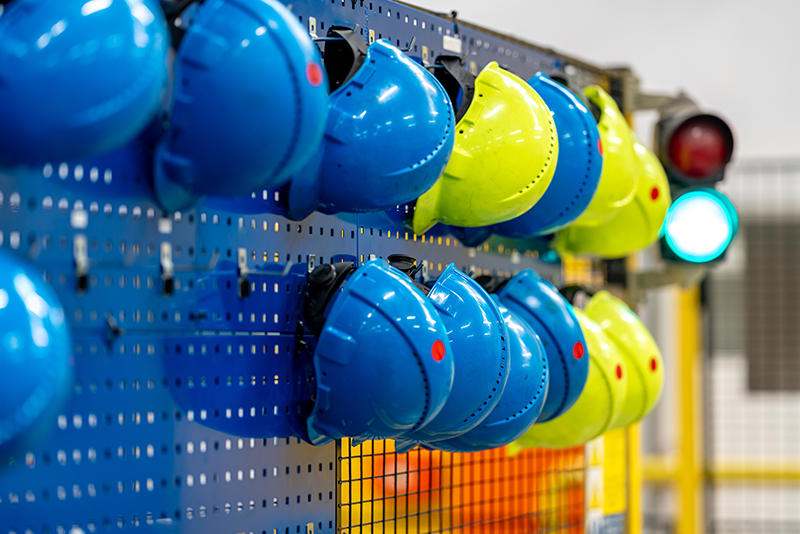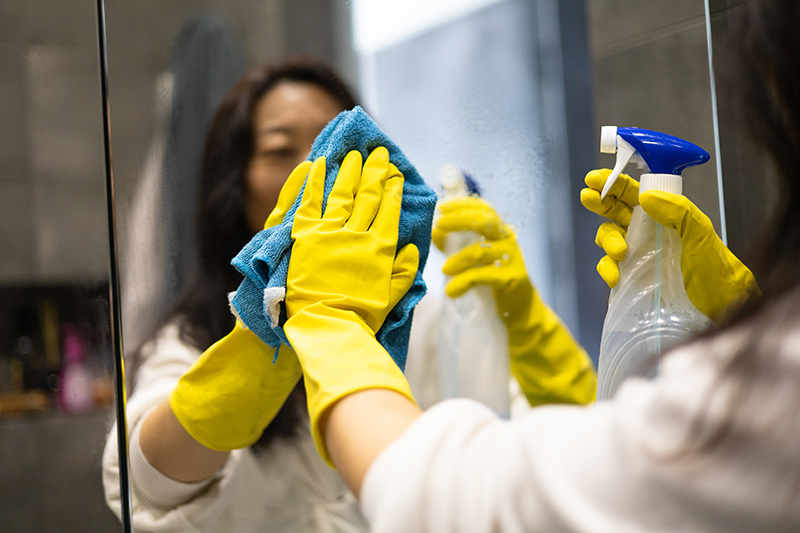Workplace Hazards and How to Avoid Them
Did you know that over 2.8 million nonfatal workplace injuries and illnesses were reported in the United States in a single recent year? Staying safe on the job means more than just following rules. Hidden hazards can cause lasting harm if left unchecked. This guide reveals the most common workplace dangers and gives you clear steps for protecting your health every day.
1. Physical Hazards: Preventing Common Workplace Injuries
Workplace physical hazards represent significant risks that can lead to serious injuries and long term health complications. Understanding and proactively addressing these dangers is essential for maintaining a safe work environment.
Physical hazards encompass a wide range of environmental conditions that can potentially harm workers. According to the Occupational Safety and Health Administration (OSHA), these hazards include excessive noise levels, radiation exposure, and extreme temperatures. Each of these elements can create dangerous conditions that compromise worker safety and well-being.
Noise represents one of the most common physical hazards across many industries. Prolonged exposure to loud sounds can cause permanent hearing damage, leading to irreversible hearing loss. Workers in construction, manufacturing, and industrial settings are particularly vulnerable. Implementing strategic noise reduction measures becomes crucial.
To mitigate physical hazards effectively, employers and employees must work together. Practical steps include:
- Conducting regular workplace safety assessments
- Providing appropriate personal protective equipment (PPE)
- Establishing clear safety protocols for high-risk environments
- Training employees on potential hazard recognition
- Maintaining and regularly inspecting workplace equipment
Radiation and temperature extremes also pose significant risks. Workers exposed to ionizing radiation or extreme heat and cold need specialized protective gear and carefully monitored work conditions. Our blog post about the most common causes of a personal injury accident highlights how understanding these risks can prevent potential workplace injuries.
Recognizing potential physical hazards requires ongoing vigilance. By prioritizing worker safety through education, proper equipment, and proactive management, organizations can significantly reduce the likelihood of workplace injuries and create a safer working environment.

2. Chemical Hazards: Understanding Exposure Risks
Chemical hazards represent a significant yet often overlooked danger in many workplaces. From manufacturing facilities to office cleaning closets, potentially harmful substances surround workers daily.
Chemical exposure can occur through multiple pathways including inhalation, skin absorption, and accidental ingestion. Common workplace chemicals like cleaning solvents, industrial acids, and maintenance products can cause serious health complications ranging from minor skin irritation to long term respiratory problems.
Occupational safety experts emphasize the critical importance of understanding chemical risks. According to OSHA guidelines, workers must be trained to recognize and manage potential chemical dangers. This involves more than simply avoiding contact it requires comprehensive knowledge and strategic prevention.
To protect yourself from chemical hazards, consider these essential strategies:
- Review Safety Data Sheets (SDS) for every chemical in your workspace
- Use appropriate personal protective equipment (PPE)
- Understand proper chemical storage and handling procedures
- Ensure adequate workplace ventilation
- Report any chemical spills or potential exposure immediately
Some chemicals pose immediate risks like burns or respiratory irritation while others can cause cumulative damage over time.
Effective chemical hazard management requires ongoing education and vigilance. By understanding potential risks and implementing robust safety protocols, workers can significantly reduce their chances of experiencing harmful chemical exposure.
3. Biological Hazards: Staying Safe from Infections
Biological hazards represent a hidden yet significant threat in many workplaces. These microscopic dangers can spread quickly and compromise worker health across various professional environments.
Biological hazards include exposure to infectious agents such as bacteria, viruses, fungi, and other microorganisms that can cause serious health complications. Healthcare facilities, laboratories, agricultural settings, and even traditional office spaces can harbor potential biological risks that workers must understand and manage proactively.
Occupational safety experts emphasize that understanding transmission routes is critical for preventing workplace infections. Different biological agents spread through various mechanisms including direct contact, airborne transmission, and contaminated surface interactions. This means workers must remain vigilant and implement comprehensive protection strategies.
To effectively mitigate biological hazard risks, consider these essential protective measures:
- Practice rigorous hand hygiene
- Use appropriate personal protective equipment
- Maintain clean and sanitized work surfaces
- Understand proper waste disposal protocols
- Get recommended vaccinations
- Report potential exposure incidents immediately
Some professional settings carry higher biological risk profiles. Healthcare workers, laboratory technicians, and those handling biological materials face increased exposure potential. These individuals require specialized training and more advanced protective protocols.
Importantly, biological hazard management is not just about personal protection it involves creating a culture of safety and shared responsibility.
By staying informed, following established safety guidelines, and maintaining consistent preventive practices, workers can significantly reduce their vulnerability to biological hazards and protect their overall health.

4. Ergonomic Hazards: Reducing Strain and Injury
Ergonomic hazards silently threaten worker health across virtually every workplace environment. These physical stressors can transform routine tasks into potential sources of long term injury and chronic pain.
Ergonomic hazards encompass workplace conditions that create unnecessary physical strain through repetitive motions, awkward postures, and excessive force requirements. Workers in industries ranging from office environments to manufacturing facilities face significant risks of developing musculoskeletal disorders that can dramatically impact their quality of life.
Occupational safety experts emphasize that most ergonomic injuries develop gradually. Small repetitive movements or sustained uncomfortable positions can create microscopic tissue damage that accumulates over time. This means prevention requires consistent attention and proactive workplace design.
To effectively reduce ergonomic risks, workers should implement these strategic approaches:
- Adjust workstations to promote neutral body positioning
- Use equipment designed to minimize physical strain
- Take regular movement breaks
- Practice proper lifting techniques
- Invest in ergonomic chairs and supportive equipment
- Rotate job tasks to prevent repetitive motion stress
Different professions face unique ergonomic challenges. Office workers might struggle with prolonged sitting and computer use, while warehouse employees face risks from heavy lifting and repetitive movements. Understanding your specific workplace risks becomes crucial for prevention.
Common Causes of a Personal Injury Accident provides additional insights into workplace injury mechanisms that complement ergonomic safety strategies.
Successful ergonomic risk management requires a combination of personal awareness, proper equipment, and organizational commitment to worker health. By prioritizing biomechanical wellness, workers can protect themselves from potentially debilitating long term injuries.
5. Psychosocial Hazards: Managing Stress at Work
Psychosocial hazards represent an often invisible yet profound threat to workplace well being. Modern professional environments can create complex emotional and mental challenges that impact worker health and productivity.
Psychosocial hazards encompass work related stressors that compromise mental and emotional wellness. These include excessive job demands, limited autonomy, workplace conflict, poor communication, and persistent uncertainty about job security. Unlike physical injuries, these risks can erode worker resilience gradually and silently.
Workplace mental health experts emphasize that psychosocial risks are not merely individual challenges but systemic organizational issues. High stress environments can lead to decreased performance, increased absenteeism, and significant long term health complications including anxiety and depression.
To effectively manage psychosocial workplace hazards, workers should consider these strategic approaches:
- Establish clear professional boundaries
- Practice regular stress management techniques
- Communicate openly with supervisors about workload concerns
- Develop robust support networks
- Seek professional counseling if workplace stress becomes overwhelming
- Prioritize work life balance
Some industries inherently carry higher psychosocial risk profiles. High pressure sectors like healthcare, emergency services, and corporate environments often require more sophisticated mental health support strategies.
Common Causes of a Personal Injury Accident provides additional context about workplace stress and its potential long term implications.
Addressing psychosocial hazards requires a collaborative approach involving individual resilience, organizational support, and proactive mental health strategies. By recognizing and responding to these challenges, workers can create healthier more sustainable professional environments.

6. Safety Hazards: Avoiding Slips, Trips, and Falls
Slips, trips, and falls represent some of the most common yet preventable workplace accidents. These seemingly minor incidents can result in significant injuries that impact worker health and organizational productivity.
Safety hazards related to slips, trips, and falls create unexpected risks in nearly every professional environment. From office spaces to industrial settings, unaddressed surface conditions can transform routine movements into potential injury scenarios. Workers face dangers from wet floors, uneven surfaces, obstructed walkways, and poorly maintained work areas.
Occupational safety research indicates that most slip and fall accidents result from preventable environmental conditions. These incidents are not random occurrences but predictable outcomes of inadequate workplace maintenance and safety protocols. Understanding potential risk factors becomes crucial for preventing serious injuries.
To effectively minimize safety hazards, workers should implement these strategic approaches:
- Keep walkways clear of obstacles
- Clean spills immediately
- Use appropriate warning signs
- Wear proper footwear with good traction
- Maintain consistent floor maintenance
- Report potential hazardous conditions promptly
Some workplace environments carry higher fall risk profiles. Construction sites, healthcare facilities, restaurants, and manufacturing spaces require more rigorous safety monitoring and intervention strategies.
Medical Treatment After a Slip and Fall Accident provides critical insights into managing potential injuries that might result from workplace safety incidents.
Successful safety hazard management requires a collective approach involving individual awareness, organizational commitment, and proactive risk mitigation strategies. By recognizing and addressing potential slip, trip, and fall risks, workers can create safer more secure professional environments.
7. Electrical Hazards: Protecting Against Shocks and Fires
Electrical hazards represent a silent yet potentially deadly threat in many workplace environments. Seemingly harmless electrical systems can quickly transform into life threatening risks without proper management and awareness.
Electrical hazards encompass a wide range of potential dangers including electric shock, electrical burns, and fire risks. These threats exist across diverse professional settings from office spaces to industrial facilities. Workers face potential risks from exposed wiring, overloaded circuits, damaged electrical equipment, and improper maintenance practices.
Occupational safety experts emphasize that most electrical incidents result from preventable conditions. Faulty equipment, inadequate training, and overlooked maintenance create scenarios where electrical systems can suddenly become dangerous. Understanding these risks becomes crucial for protecting worker safety.
To effectively mitigate electrical hazards, workers should implement these strategic approaches:
- Inspect electrical equipment regularly
- Avoid overloading electrical outlets
- Use appropriate personal protective equipment
- Report damaged electrical systems immediately
- Maintain clear access to electrical panels
- Receive proper electrical safety training
Some professional environments carry higher electrical risk profiles. Construction sites, manufacturing facilities, and laboratories require more rigorous electrical safety protocols and continuous monitoring.
Successful electrical hazard management requires a comprehensive approach involving individual awareness, organizational commitment, and proactive risk mitigation strategies. By recognizing and addressing potential electrical dangers, workers can create safer more secure professional environments.
Below is a comprehensive table summarizing various workplace hazard types, their key risks, and preventive measures discussed throughout the article.
| Hazard Type | Key Risks | Preventive Measures |
|---|---|---|
| Physical Hazards | Excessive noise, radiation, extreme temperatures | PPE, safety assessments, equipment inspections |
| Chemical Hazards | Inhalation, skin absorption, ingestion of harmful substances | Review SDS, proper storage, adequate ventilation |
| Biological Hazards | Infections from bacteria, viruses, fungi | Hand hygiene, PPE, vaccinations, waste disposal protocols |
| Ergonomic Hazards | Musculoskeletal disorders from repetitive motion | Neutral body positioning, ergonomic equipment, movement breaks |
| Psychosocial Hazards | Stress, anxiety from excessive job demands | Stress management techniques, open communication, work-life balance |
| Safety Hazards | Slips, trips, and falls | Clear walkways, immediate spill cleanup, proper footwear |
| Electrical Hazards | Electric shock, burns, fire risks | Regular inspections, avoid overloading outlets, safety training |
Protect Your Rights After Facing Workplace Hazards
Every workplace hazard described here presents serious risks that could change your life in an instant. From physical injuries caused by slips and falls to long-term effects of chemical and biological exposure, the pain and uncertainty can feel overwhelming. You deserve expert guidance to ensure you get the compensation you need and the justice you deserve.
If you or a loved one has suffered due to unsafe work conditions, do not wait to take action. Goldberg & Loren has over 120 years of combined experience fighting for injured workers in California and Alaska. Our dedicated team understands the complexities of workplace injury and employment law and will stand by your side every step of the way. Visit Goldberg & Loren today to learn how we can protect your rights or call us at 1-888-352-9243 to pursue maximum compensation. Start your free case review now and take the first step toward your recovery.
Frequently Asked Questions
What are the key types of workplace hazards I should recognize?
Physical, chemical, biological, ergonomic, psychosocial, safety, and electrical hazards are the key types you should recognize. Make a checklist to identify potential risks in each category within your workplace.
How can I prevent slips, trips, and falls at work?
To prevent slips, trips, and falls, keep walkways clear, immediately clean spills, and use warning signs. Conduct regular safety inspections to ensure all areas are maintained and hazardous conditions are reported promptly.
What protective measures can I take against chemical hazards?
Review Safety Data Sheets for chemicals used in your workplace and always use appropriate personal protective equipment (PPE). Develop a routine to inspect and maintain your chemical storage areas, aiming for monthly checks to ensure safety protocols are followed.
How do I recognize ergonomic hazards in my workplace?
Look for repetitive motions, poor workstation design, and awkward postures that could lead to physical strain. Assess your work environment every few months and make necessary adjustments, like promoting neutral body positioning and using ergonomic tools.
What steps should I take to manage psychosocial hazards at work?
Establish clear professional boundaries and communicate openly with supervisors about workload concerns to manage psychosocial hazards. Integrate stress management techniques into your daily routine to help alleviate workplace stressors, aiming for daily practices to foster a healthier work environment.
How can I improve electrical safety in my workplace?
Improve electrical safety by regularly inspecting equipment and avoiding overloaded circuits. Implement a maintenance schedule that includes checking electrical systems every quarter to ensure risks are minimized.

